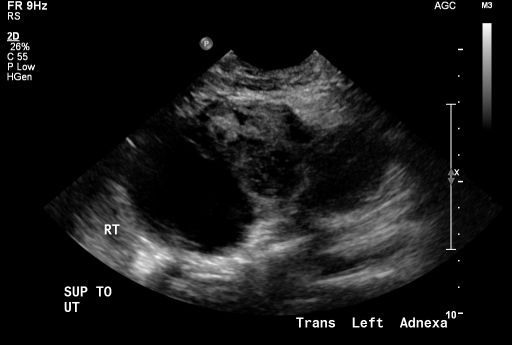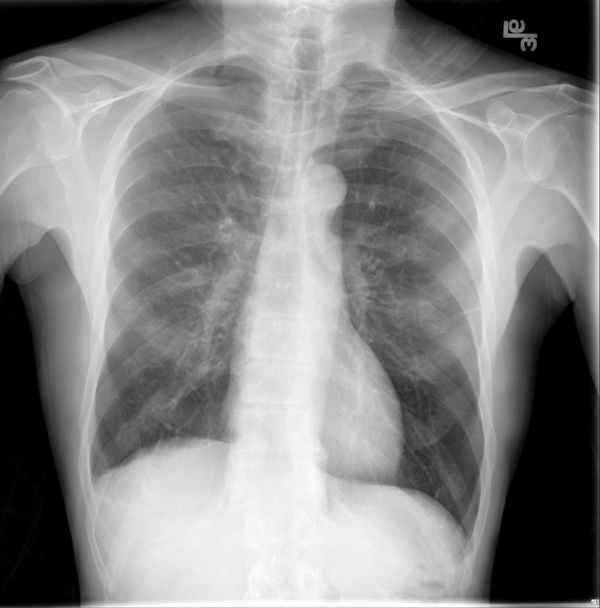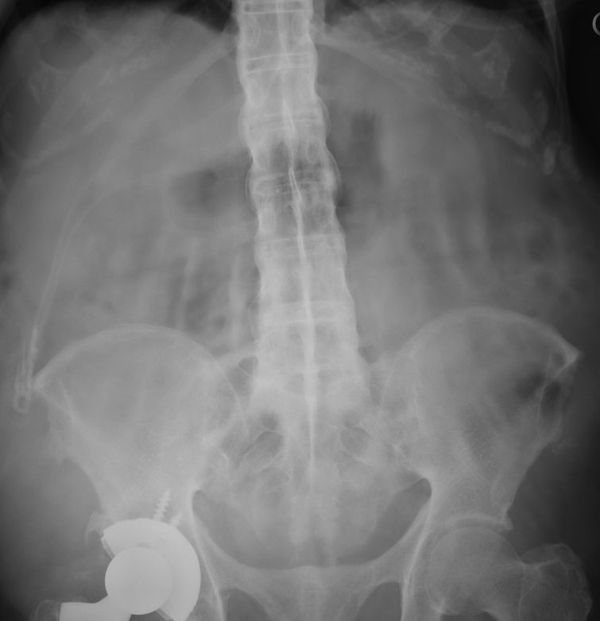Season 1 Case 14
History: severe left pelvic pain

Answer:
CLICK HERE FOR ANSWER
Answer: ovarian torsion. (I know it can be difficult on a single image so level of difficulty is 4/5)
Keys to the diagnosis:
1) size and appearance of the ovary - MOST COMMON -look for enlarged (often 6-8cm) and heterogeneous
2) masses - 73% of torsion often relates to an asymmetric mass (cystic or solid)
3) location of the ovary - torsion frequently involves rotation and displacement of the ovary medial to it’s normal position (often “sitting” on the uterine fundus" - as here)
4) Doppler is notoriously variable (see the article but up to 60% of torsions have reported flow). If you do look at flow, lack of venous flow is much more sensitive than arterial (1. possibly due to thromboocclusion from the twisted veins and 2. dual arterial blood supply). **A torsed ovary can have flow and a lack of flow can easily be a technical artifact** Doppler flow is much better used to determine viability rather than the actual diagnosis.




